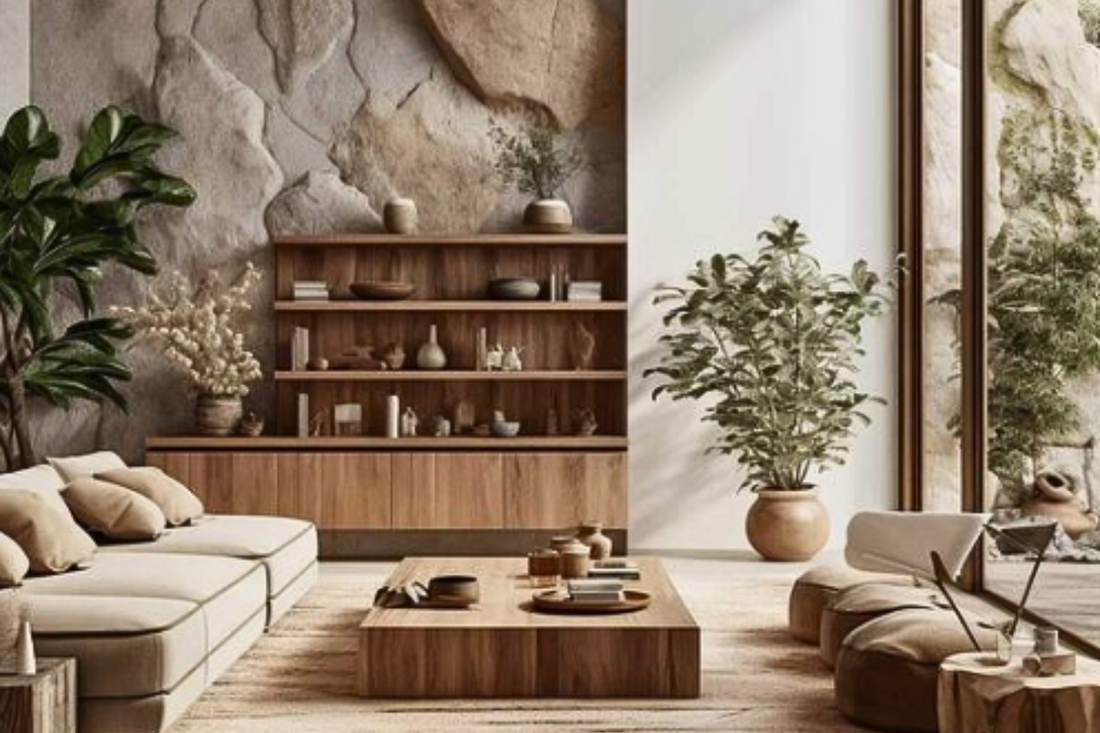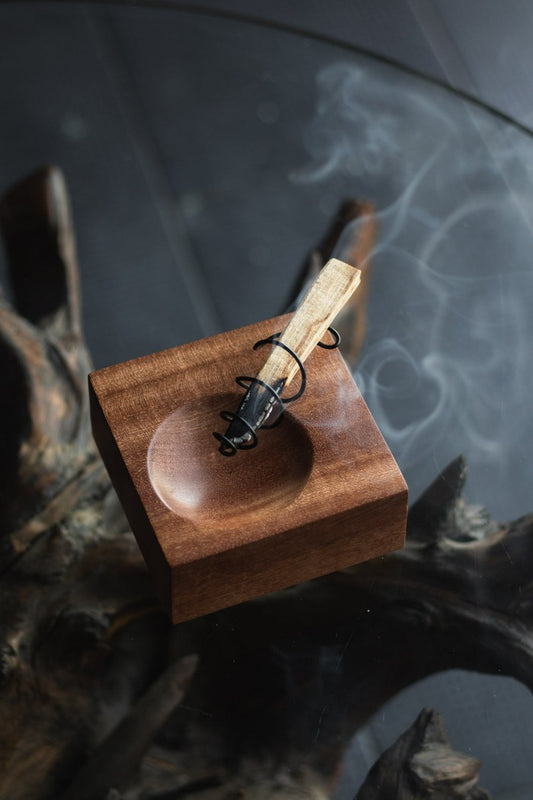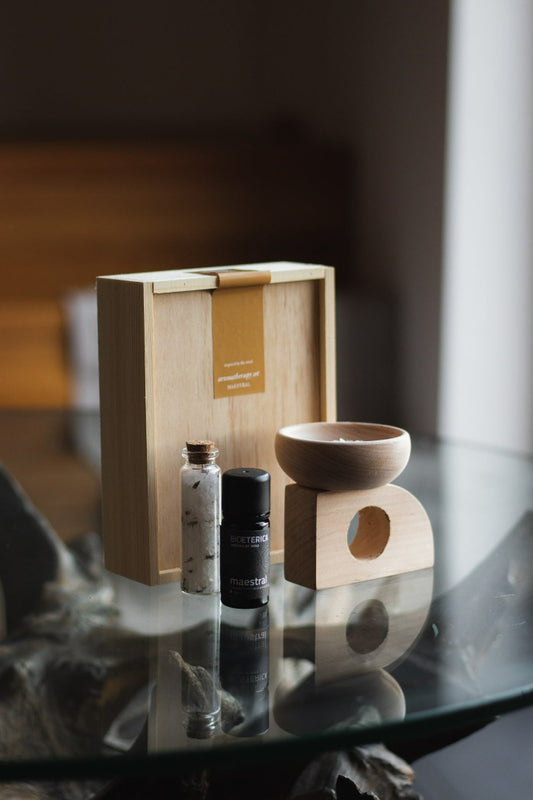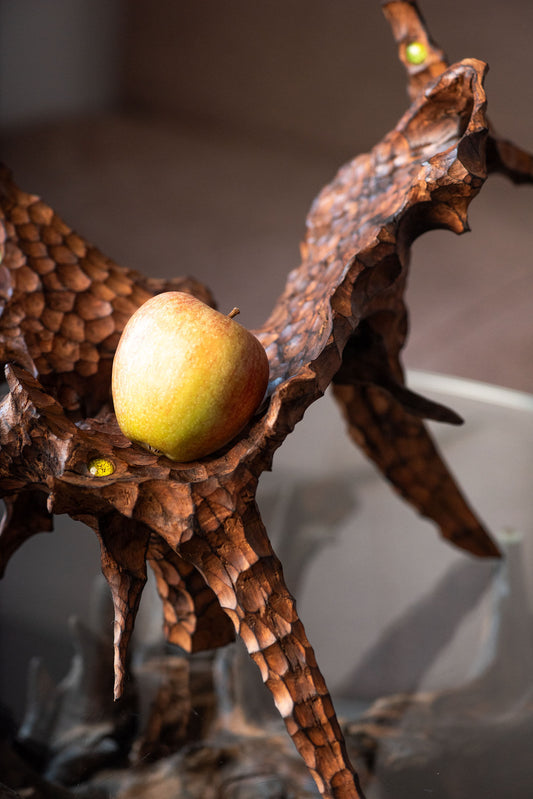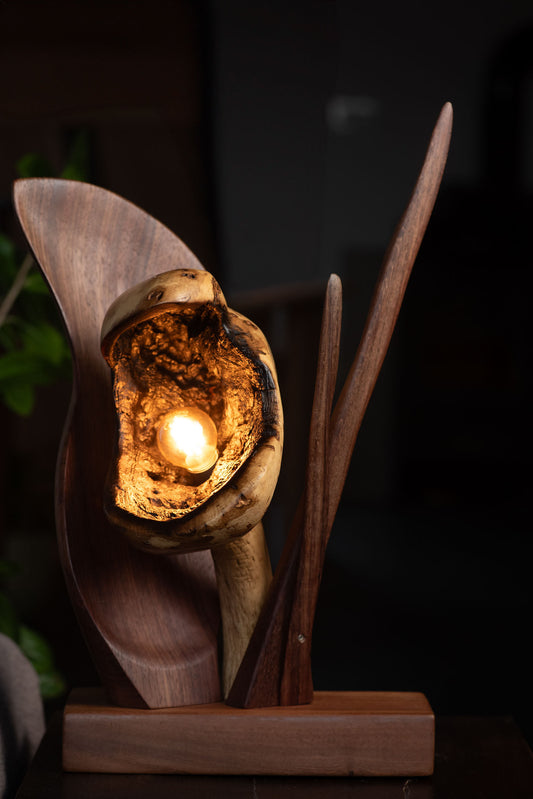Living in today’s world, where urbanization and technological advancements dominate our surroundings, the longing for a deeper connection with nature grows more and more each day. Enter biophilic design, an innovative approach to architecture and interior design that seeks to satisfy this innate human craving by bringing the essence of the natural world into our built environments.
Imagine stepping into a space where sunlight filters through leafy branches, where the gentle sound of flowing water soothes the senses, and where the air is infused with the refreshing aroma of greenery. This is the essence of biophilic design—a harmonious blend of nature and architecture that not only delights the senses but also nourishes the mind, body, and soul.
At its core, biophilic design is more than just a trend or aesthetic preference; it's a profound recognition of our deep-seated connection to the natural world—a connection that has been woven into the fabric of human evolution for millennia. From our primal instincts to seek out shelter in forests and caves to our modern-day yearning for green spaces in urban jungles, the bond between humans and nature is undeniable and enduring.
In this article, we embark on a journey into the world of biophilic design, exploring its key principles, its impact on human health and well-being, and its transformative potential in shaping the way we live, work, and interact with our surroundings. From the incorporation of natural light and materials to the integration of living plants and water features, each aspect of biophilic design serves to evoke the essence of nature and create environments that nurture and inspire.
Join us as we delve into the beauty, science, and artistry of biophilic design—a design philosophy that not only celebrates our connection to the natural world but also holds the promise of a more harmonious and sustainable future for generations to come.
The Key Principles of Biophillic Design
Biophilic interior design is an approach that seeks to incorporate elements of nature into indoor spaces to enhance well-being and connection with the natural world. It draws inspiration from biophilia, which is the innate human tendency to seek connections with nature and other living beings.
Let's delve into each key principle of biophilic design:
- Natural Light:
Natural light is more than just illumination; it's a vital element in biophilic design that connects indoor spaces with the rhythms of nature. Maximizing the use of natural light sources, such as windows, skylights, and clerestory windows, not only reduces reliance on artificial lighting but also enhances the visual appeal and comfort of a space. Sunlight streaming through windows creates dynamic patterns of light and shadow, animating interiors with a sense of movement and vitality. Additionally, exposure to natural light has numerous health benefits, including regulating circadian rhythms, improving mood, and boosting productivity. By prioritizing natural light in design, spaces become brighter, more inviting, and conducive to human well-being.
- Natural Materials:
The use of natural materials is fundamental to biophilic design, as it connects occupants with the inherent beauty and authenticity of the natural world. Incorporating materials such as wood, stone, bamboo, clay, and natural fibers brings warmth, texture, and character to interior spaces. These materials not only evoke a sense of harmony with nature but also provide tactile stimulation and visual interest. From hardwood floors to exposed brick walls to wool rugs, each natural material adds depth and richness to the design, creating environments that are both visually appealing and emotionally comforting. Furthermore, natural materials often have low environmental impact and can be sourced sustainably, aligning with principles of ecological responsibility and stewardship.
- Living Plants:
Plants are integral to biophilic design, as they bring life, color, and vitality into indoor environments while also providing a myriad of health benefits. Incorporating live plants and greenery into interior spaces not only improves air quality by filtering out pollutants but also reduces stress, enhances concentration, and boosts creativity. From potted plants to vertical gardens to living walls, there are countless ways to integrate vegetation into design schemes, regardless of space constraints. The presence of plants creates a sense of connection with nature, fostering a biophilic bond that resonates deeply with human psychology and well-being. Moreover, caring for plants cultivates a sense of responsibility and mindfulness, encouraging occupants to nurture and appreciate the natural world around them.
- Biomorphic Forms:
Biomorphic forms draw inspiration from natural shapes, patterns, and structures found in the environment, reflecting the organic complexity and beauty of the natural world. Incorporating biomorphic elements into design, such as curved lines, flowing contours, and fractal patterns, softens the rigidity of built environments and fosters a sense of fluidity and movement. Whether expressed through furniture, architectural details, or decorative elements, biomorphic forms evoke feelings of comfort, harmony, and tranquility. They resonate with our innate affinity for nature, triggering positive emotional responses and promoting a sense of well-being. By infusing spaces with biomorphic design elements, interiors become more inviting, engaging, and harmonious, enriching the human experience.
- Natural Colors:
Natural colors play a crucial role in biophilic design, as they evoke the hues and tones found in the natural world, creating environments that feel grounded, serene, and harmonious. Earthy tones such as greens, browns, blues, and neutrals dominate biophilic color palettes, reflecting the colors of landscapes, foliage, water, and sky. These colors evoke a sense of calmness, balance, and connection with nature, promoting relaxation and stress reduction. By incorporating natural colors into interior spaces through paint, finishes, furnishings, and textiles, designers can evoke specific moods and atmospheres that resonate with occupants on a deep, visceral level. Natural colors also provide a versatile backdrop for other biophilic elements, allowing them to take center stage and shine within the overall design scheme.
- Water Features:
Water is a powerful element in biophilic design, symbolizing renewal, vitality, and life itself. Incorporating water features into interior spaces, such as fountains, ponds, or indoor waterfalls, creates sensory experiences that soothe the mind, calm the spirit, and evoke a sense of tranquility. The sound of flowing water produces a gentle, rhythmic soundtrack that masks unwanted noise, promotes relaxation, and enhances focus. Visual reflections and dynamic movement of water add visual interest and depth to interiors, creating a dynamic focal point that captivates the imagination. Whether used as a central feature or integrated subtly into the design, water elements bring a sense of serenity and connection with nature into indoor environments, fostering a deeper appreciation for the beauty and power of water.
- Outdoor Connections:
Blurring the boundaries between indoor and outdoor spaces is a hallmark of biophilic design, as it fosters a seamless transition between the built environment and the natural world. Creating connections to the outdoors through features such as large windows, glass doors, outdoor patios, balconies, and terraces allows occupants to experience the sights, sounds, and sensations of nature from within the comfort of interior spaces. These connections provide visual access to natural landscapes, daylight, and fresh air, promoting a sense of openness, freedom, and well-being. By integrating indoor and outdoor environments, biophilic design expands the boundaries of architectural space, inviting occupants to engage with nature in meaningful ways and fostering a deeper connection to the surrounding environment.
Each of these key principles of biophilic design contributes to creating interior spaces that are not only visually appealing but also conducive to human health, well-being, and happiness. By incorporating elements of nature into design, biophilic interiors nurture our innate connection with the natural world, enriching our daily lives with beauty, inspiration, and a sense of harmony and balance.
Designing Interiors for All 5 Senses
Biophilic interior design is deeply connected to the human senses and aims to engage them in various ways to enhance the overall experience of the space. Here's how each of the five senses can be engaged through biophilic design:
-
Sight: Biophilic design often focuses on visual elements that mimic nature, such as incorporating natural materials, textures, colors, and patterns. Views of greenery, natural landscapes, or water features can also be emphasized to provide visual stimulation and connection with the outdoors.
-
Hearing: Incorporating elements that produce soothing sounds from nature, such as indoor water features like fountains or the gentle rustle of leaves, can help create a calming atmosphere. Additionally, materials that absorb or dampen unwanted noise while allowing natural sounds to filter through can enhance the auditory experience.
-
Touch: Biophilic design utilizes natural materials with tactile qualities, such as wood, stone, and textiles made from natural fibers, to encourage tactile engagement. Textures inspired by nature, such as rough bark, smooth pebbles, or soft foliage, can be incorporated into surfaces and furnishings to invite touch and exploration.
-
Smell: Introducing natural scents and aromas through live plants, essential oils, or natural materials like wood and herbs can stimulate the olfactory senses and evoke feelings of relaxation and rejuvenation. Fragrant flowers, herbs, and foliage can enhance air quality and create a more pleasant indoor environment.
- Taste: While taste may not be as directly engaged in interior design as the other senses, biophilic design can indirectly influence taste by promoting healthier habits and connections to nature. For example, incorporating edible plants and herbs into indoor gardens or kitchen spaces can encourage the use of fresh ingredients in cooking, promoting a healthier lifestyle.
By engaging all five senses, biophilic interior design aims to create holistic and immersive environments that promote well-being, connectivity with nature, and a heightened sense of comfort and satisfaction.
Scent as a Transformative Element of Design
Incorporating scent into interior spaces is a transformative element of design that has the power to elevate everyday experiences, evoking emotions, memories, and connections with the surrounding environment. From the moment you step into a scented space, whether it's your home, office, or a public setting, the olfactory experience engages your senses in a profound way, enriching your daily life in several meaningful ways.
Imagine entering your home after a long day at work, and being greeted by the welcoming aroma of fresh lavender or citrus. The subtle fragrance instantly uplifts your mood, melting away the stresses of the day and signaling to your brain that it's time to unwind and relax. Scented candles, essential oil diffusers, or potpourri strategically placed throughout your living space infuse the air with delicate fragrances that transport you to a state of tranquility and comfort.
In the morning, as you prepare for the day ahead, the invigorating scent of eucalyptus or lemon in your bathroom awakens your senses and energizes your mind, setting a positive tone for the day ahead. The refreshing aroma clears your thoughts, helping you to focus and prepare for the tasks ahead with renewed clarity and vigor.
In shared spaces such as offices or public areas, carefully selected scents can create a welcoming and inviting atmosphere, enhancing the overall experience for occupants and visitors alike. For instance, in a bustling office environment, the subtle scent of rosemary or peppermint can promote concentration and productivity, while also reducing stress and boosting mood.
Furthermore, incorporating natural scents derived from botanical sources into interior spaces not only enhances the ambiance but also promotes environmental sustainability and wellness. Using essential oils extracted from plants and flowers, rather than synthetic fragrances, ensures a pure and authentic olfactory experience that is in harmony with nature.
This sensation is easily achieved with our natural and organic Aromatherapy Sets, created to elevate each part of your day with beautiful scents of organic essential oils placed in handmade diffusers, crafted from sustainable materials. Amongst 4 different essential oil blends, there is something for every need. Whether you seek relaxation, focus, mood lift or energy boost - we got you covered. Explore the collection here.
Overall, the thoughtful integration of scent into interior design has the remarkable ability to elevate your everyday life, enriching your surroundings with sensory delights that awaken your senses, evoke emotions, and create lasting impressions. Whether it's creating a cozy ambiance at home, fostering productivity in the workplace, or enhancing the customer experience in commercial settings, scent has the power to transform spaces and enhance the quality of life for all who inhabit them.
Biophillic Design - a Soul-nurturing Innovation
In conclusion, biophilic design stands as a beacon of innovation and inspiration in the realm of architecture and interior design, offering a compelling alternative to conventional approaches that prioritize functionality and aesthetics over human well-being and connection to nature.
As we've explored throughout this discussion, the principles of biophilic design—from maximizing natural light and incorporating natural materials to integrating living plants and water features—work in harmony to create environments that not only look beautiful but also feel nurturing, revitalizing, and deeply enriching.
But what sets biophilic design apart and makes it a compelling choice over any other design approach? The answer lies in its profound ability to address the fundamental human need for connection with nature—a need that is increasingly overlooked in our modern, technology-driven lifestyles.
By immersing ourselves in spaces that evoke the sights, sounds, scents, and sensations of the natural world, we tap into a wellspring of benefits that extend far beyond mere aesthetics. Studies have shown that exposure to nature and natural elements within built environments can reduce stress, improve cognitive function, enhance creativity, boost productivity, and promote overall well-being.
Moreover, biophilic design offers a path towards sustainability and ecological stewardship, as it encourages the use of natural materials, energy-efficient strategies, and sustainable practices that minimize environmental impact and support the health of the planet.
In a world where the pace of urbanization continues to accelerate and our connection to nature becomes increasingly tenuous, biophilic design serves as a powerful reminder of our inherent bond with the natural world—a bond that is essential for our physical, mental, and emotional health.
So, whether it's designing a home that rejuvenates the spirit, creating an office that inspires creativity and collaboration, or shaping public spaces that foster community and well-being, biophilic design offers a transformative approach that honors our connection to nature and enriches the human experience in profound and meaningful ways.
In choosing biophilic design, we not only create spaces that delight the senses and nurture the soul but also contribute to a more sustainable, harmonious, and resilient future for ourselves and generations to come. It's a choice that speaks to our deepest instincts, our highest aspirations, and our shared responsibility to cherish and protect the natural world that sustains us all.

